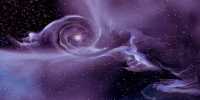A material has been engineered that conducts electricity with zero resistance at room temperature. Unfortunately, this requires unimaginably high pressure. Physics research has reached one of the sacred grills but it is still something we do not expect.
The resistance of most components decreases with temperature, but the discovery is that for some people in extreme winter conditions it suddenly drops to zero, a shock known as superconductivity. Until 1911 it was believed that all matter resisted the passage of electricity with some heat.
In 1986, the physics world was once again stunned when certain ceramics became superconducting at high temperatures, winning the following year with the fastest Nobel Prize in Physics in history. “High temperature” in this case does not mean what you think; the Boiling point of nitrogen qualifies above -196.2°C (-321.1 ° F).
For 34 years, scientists have come closer to the goal of superconductors at temperatures that don’t give you freezing. Now Dr. Ranga Dias of the University of Rochester has done just that. However, like many exploration heroes who search for mythical stems, what he finds doesn’t quite match the dream.
For example, electricity can be saved or moved over great distances at almost no cost. Individual magnetic fields created by superconductors can be game-changers for scientific instruments, medical imaging devices, and non-friction transport devices. For this to happen, however, we need not only a larger amount than what Dias technology offers, but we also need realistic pressure. Strong superconductivity in everyday situations will reveal a string of technologies that could possibly change our world more than almost any other scientific advancement.
Dias Hall describes using hydrogen to form equal amounts of carbon and sulfur at a temperature of 15°C (59 ° F) using a pressure of 39 million pounds per square inch to mix hydrogen into equal amounts of carbon and sulfur, In Nature. Unfortunately, this is 2.5 million times the atmospheric pressure at sea level, which can only be achieved by scattering elements in minutes between two diamonds.
Dias thinks such achievements are on their way. “Due to the limitations of low temperatures, materials with such extraordinary properties have not been able to transform the world in a way that many would have imagined. However, our discovery will break down these barriers and open the door to many potential applications,” he said in a statement.
Dias said, “To have a high-temperature superconductor you want stronger bonds and lighter components. These are two very basic criteria.” Encouragingly, Dias superconductors do not require rare or expensive components. “Hydrogen is the lightest element and hydrogen bonding is one of the strongest.”
Dias saw the possibility of using hydrogen-rich organic matter rather than pure hydrogen, which he called “compositional tuning” in order to achieve superconductivity more easily. The formation of metallic hydrogen at very high pressures was suggested by astronomers to explain observations of Jupiter’s chaos otherwise, and it was built in 2017 in the lab.
















